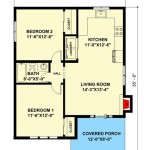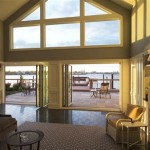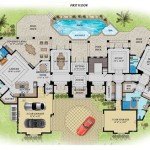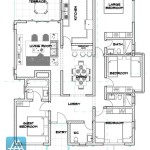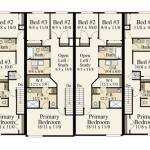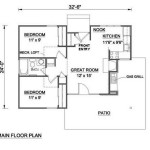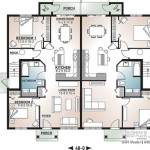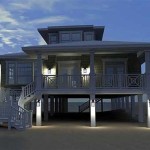House Plans With Bowling Alley: A Comprehensive Guide
Integrating recreational spaces into residential architecture has become increasingly popular. Beyond home theaters and game rooms, some homeowners are opting for more elaborate amenities, such as private bowling alleys. This article explores the considerations, benefits, and design aspects of house plans incorporating a bowling alley, providing a comprehensive overview for those interested in this unique architectural feature.
The inclusion of a bowling alley within a home transforms the residence into a multifunctional space, blurring the lines between living and entertainment. This feature provides a dedicated area for recreation, social gatherings, and potentially even skill development in the sport of bowling. However, the addition of such a specialized space involves significant planning, structural modifications, and adherence to specific technical requirements.
Planning and Design Considerations
The initial phase of incorporating a bowling alley into a house plan requires careful consideration of space allocation, structural integrity, and acoustic management. A standard bowling lane, including the approach area and pinsetter, typically requires a length of approximately 85 to 95 feet and a width of at least 10 to 15 feet per lane. This significant footprint necessitates a dedicated area, often within a basement, a large adjacent structure, or a newly constructed wing of the house.
Structural integrity is paramount, as the weight of the bowling equipment and regular usage can place significant stress on the building's foundation and supporting framework. Consulting with a structural engineer is crucial to ensure the existing or planned structure can adequately support the bowling alley. Reinforcements may be necessary, particularly in older homes or those not initially designed for such a heavy load.
Acoustic management is another critical aspect. The sound generated by bowling balls impacting pins can be substantial and disruptive to other areas of the home. Implementing soundproofing measures, such as installing acoustic panels on walls and ceilings, using sound-dampening flooring, and ensuring proper insulation, is essential to mitigate noise transmission.
Beyond the functional aspects, aesthetic design plays a significant role in integrating the bowling alley seamlessly into the home's overall style. Design choices include flooring materials, wall finishes, lighting fixtures, and furniture. Some homeowners opt for a classic bowling alley aesthetic, incorporating retro-inspired décor, while others prefer a more modern and sophisticated design, integrating the bowling alley into the home's existing architectural theme.
Accessibility should also be considered, particularly for homeowners with mobility limitations. Ensuring the bowling alley is accessible via ramps or elevators and that the approach area is easily navigable is crucial for inclusivity.
Technical Requirements and Equipment
The installation of a bowling alley involves specialized equipment and technical expertise. The key components include the bowling lanes themselves, the pinsetter mechanism, the ball return system, the scoring system, and the bowling balls and pins. These components are typically sourced from specialized bowling equipment suppliers.
The bowling lanes are constructed from specific types of wood, typically maple or synthetic materials, engineered for durability and consistent ball performance. The installation process requires precise leveling and alignment to ensure the lanes are perfectly flat and even. Any imperfections in the lane surface can significantly impact ball trajectory and gameplay.
The pinsetter mechanism is a complex electromechanical device that automatically resets the pins after each frame. It requires careful calibration and maintenance to ensure reliable operation. Similarly, the ball return system, which transports the bowling balls back to the bowler, requires proper installation and maintenance to prevent jams and malfunctions.
Modern bowling alleys often incorporate automated scoring systems that track scores electronically. These systems typically include sensors that detect pinfall and display scores on overhead monitors. Some systems also offer advanced features such as game analysis and personalized profiles.
Electrical requirements are substantial due to the power demands of the pinsetter, ball return, and scoring systems. A dedicated electrical circuit with sufficient amperage is necessary to avoid overloading the home's electrical system. Proper grounding is also crucial for safety.
Ventilation is another important consideration, particularly in enclosed bowling alleys. Adequate ventilation is necessary to remove dust, odors, and other airborne particles that can accumulate from bowling activities. An air filtration system can further enhance air quality.
Benefits and Drawbacks
Incorporating a bowling alley into a house plan offers several potential benefits. It provides a dedicated space for recreation and entertainment, fostering social interaction and family bonding. It can also serve as a unique and impressive feature for entertaining guests.
For avid bowlers, a private bowling alley offers the convenience of practicing their skills anytime, without the need to travel to a commercial bowling center. It also provides a controlled environment for learning and improving bowling techniques.
Furthermore, a home bowling alley can potentially increase the property's value, particularly in upscale residential areas where unique amenities are highly sought after. It can serve as a distinctive selling point that sets the property apart from others on the market.
However, there are also potential drawbacks to consider. The cost of installing and maintaining a bowling alley can be substantial, encompassing the cost of equipment, construction, installation, and ongoing maintenance. The initial investment can range from tens of thousands to hundreds of thousands of dollars, depending on the size and complexity of the installation.
The space requirement is another significant factor. A bowling alley occupies a considerable amount of square footage, which may limit the availability of space for other potential uses. This is especially relevant for homes with limited square footage.
Noise levels can also be a concern, particularly if the bowling alley is not properly soundproofed. The sound of bowling balls impacting pins can be disruptive to other household members and neighbors.
Maintenance requirements should also be considered. Bowling lanes require regular cleaning and resurfacing to maintain optimal playing conditions. Pinsetter and ball return systems may require periodic repairs and adjustments. These maintenance tasks can add to the overall cost of owning a bowling alley.
Resale value impact is not always guaranteed. While a bowling alley can potentially increase property value, it may not appeal to all prospective buyers. Some buyers may prefer the space to be used for other purposes, such as a home gym or a storage area.
In conclusion, integrating a bowling alley into a house plan is a complex undertaking that requires careful planning, significant investment, and ongoing maintenance. While it offers the potential for enhanced recreation, entertainment, and property value, it is important to weigh the benefits against the potential drawbacks before making a decision.

Home Floor Plan W Two Lane Bowling Alley Plans Basement

Luxury Home Plan Under 10 000 Sq Ft With Bowling Alley 36670tx Architectural Designs House Plans

Home Floor Plan W Two Lane Bowling Alley Mansion House Plans

House Plans Home And Floor From Ultimate

Image Bowling Alley In House Google Search Basement Floor Plans

House Plans Home And Floor From Ultimate

Professional House Floor Plans Custom Design Homes

Home Floor Plan W Two Lane Bowling Alley Mansion House Plans

Home Two Lane Bowling Alley Layout Basement

Classical Style House Plan 7 Beds 9 Baths 18174 Sq Ft 117 146 Houseplans Com

